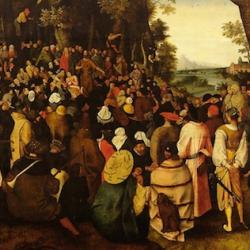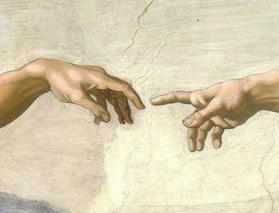Nicholas Healy has a useful article on the notion of “practice” in recent ecclesiology in the Nov 2003 issue of the International Journal of Systematic Theology . He begins by distinguishing two trends within recent ecclesiology, both of which focus on the church’s practices. The first, which he associates with Kathryn Tanner’s Theories of Culture is concerned to “bring to discourse” the practices of the church or to examine things that churches and congregations take for granted so that they can be evaluated and critiqued according to their conformity with the word of God. This branch examines the church’s practices as part of a program of semper reformanda. The second, which he associated with Lindbeck, Hauerwas, and Milbank, encourages the recovery of traditional ecclesial practices as a means for addressing the problematics of contemporary secular culture. Traditional church practices are seen as adequate to the task, provided that they are retrieved from distortion. This often takes the form of a strong “counter-cultural” ecclesiology.
Healy leaves the first trend to the side and focuses on the second. He criticizes a number of recent theologians and theologies for their inadequate attention to the actual practices of actual churches and their tendency to theologize about “ideal” practices. This is, of course, something of an irony, since the whole point of emphasizing practice is to concentrate on the concrete and particular in ecclesial life. Healy makes several points against this tendency. First, he points out that for many “loosely structured” practices the diversity of specific forms and modes is so great that it is difficult to see how they constitute practices in any meaningful sense. Healy uses the example of “hospitality,” which can take many forms and in each of these forms involves all sorts of particular decisions (what kind of greeting gesture is appropriate? what food should be offered? what are the seating arrangements?) and which does not really constitute a practice so much as obedience to a Christian precept.
Second, Healy points to the inadequate attention paid to intention in recent ecclesiology. Practices, he admits, can be formative of character, but an external act or rite can be performed for various reasons, some of which are very bad reasons. Someone may, he suggests, go through a particular Christian gesture superstitiously throughout his entier life, and as a result this gesture would not be forming Christian habits or character but the opposite. Along these lines, Healy notes that many actions are done with a variety of sometimes conflicting intentions, some of which may run contrary to the stated purpose of the practice. In sum, “practices as concretely performed are not patterns of behavior with sufficiently fixed meanings that they can do the task required of them by this version of the new ecclesiologies. Repeated performance of behavior patterns does not, of itself, issue in the right formation of church members nor the acquisition of Christian virtues. Character is indeed formed through practices, but only as they are performed with appropriate intentions and construals. Without such, practices may foster as much as halt the decline of the center and the absorption of the church into the world.” In traditional Protestant terms, Sacraments are nothing without the Word.
Healy goes on to examine the work of Reinhold Hutter and Stanley Hauerwas, and ends with a recommendation that Aquinas provides some of the materials for a more satisfactory account of practices.















